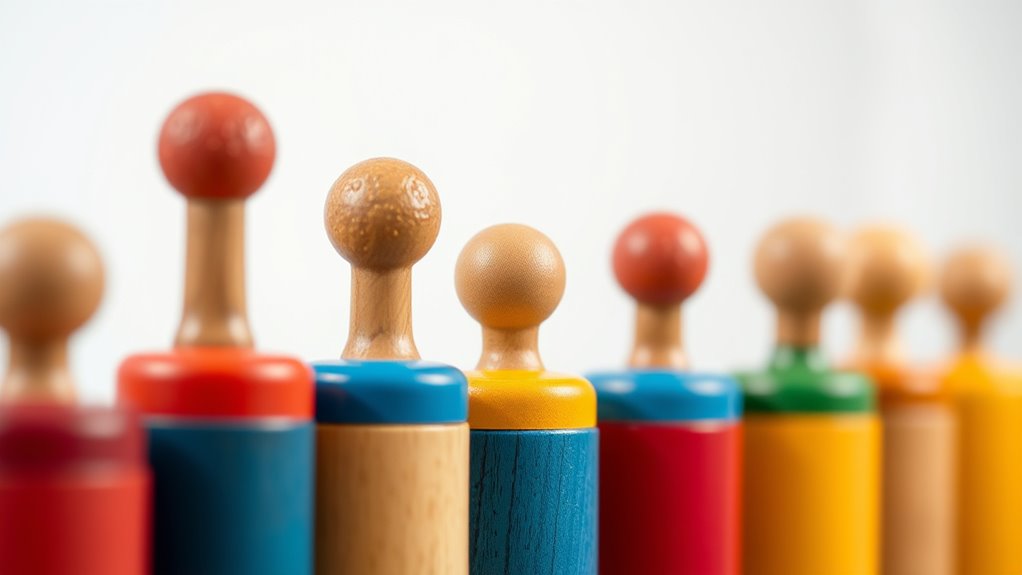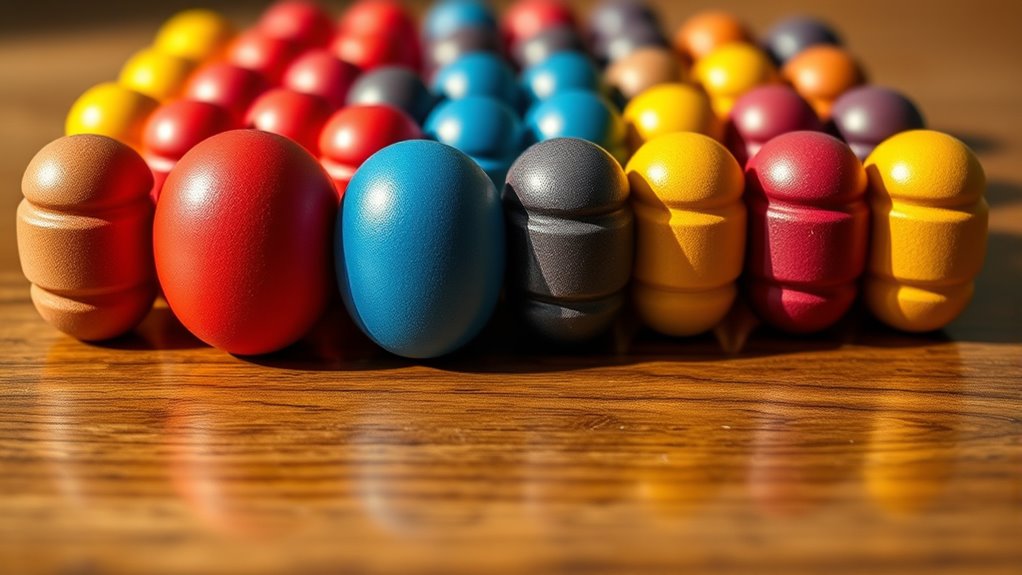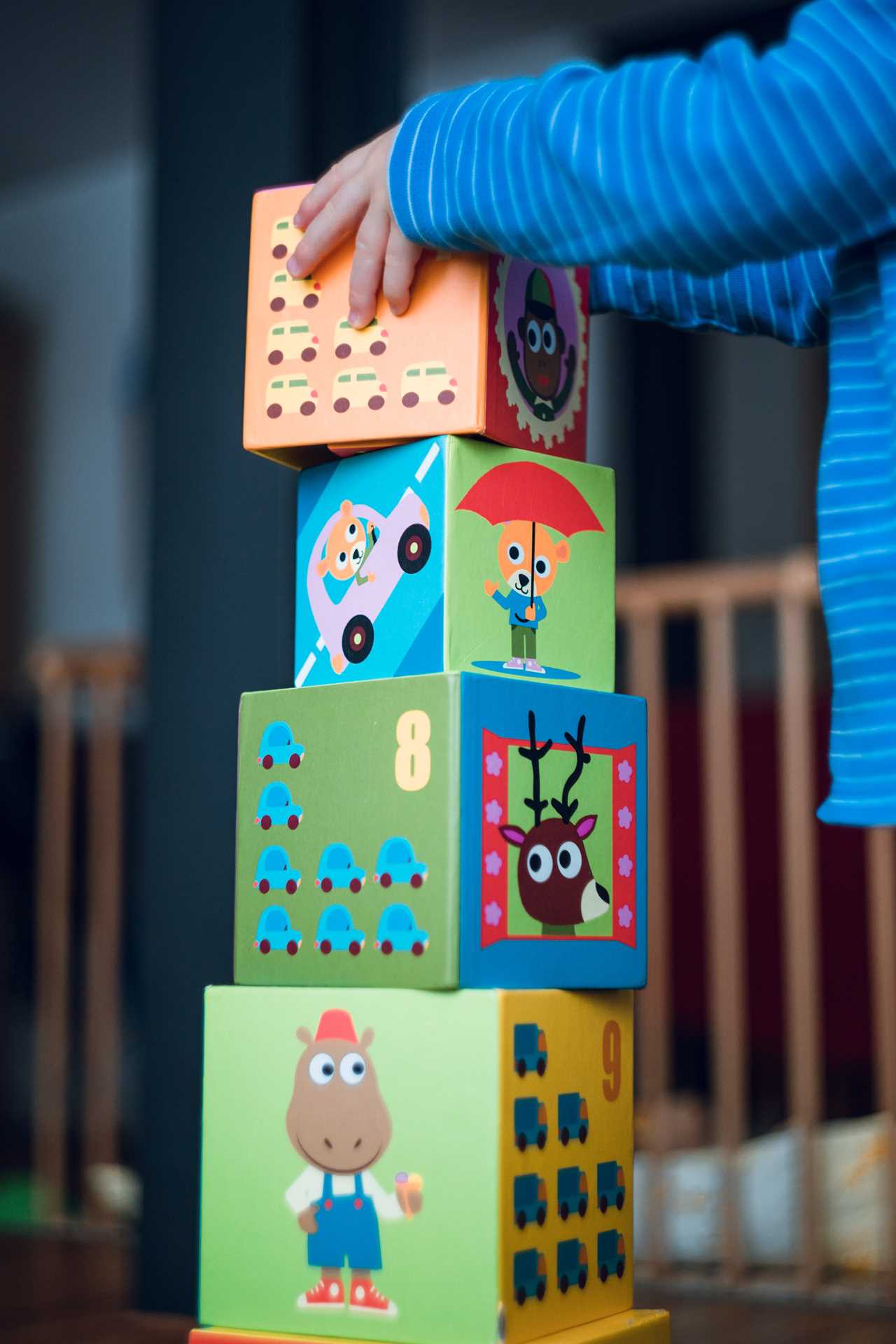Using knobbed cylinders sequencing helps you boost depth perception by sharpening your visual discrimination, spatial awareness, and fine motor skills. As you practice sorting and sequencing these cylinders, your brain learns to interpret three-dimensional space more accurately. This activity also engages your cognitive processes, improving decision-making and coordination. Consistent practice can lead to better navigation and precision in daily tasks. Keep exploring to uncover more strategies that can enhance your perceptual mastery.
Key Takeaways
- Sequencing knobbed cylinders enhances depth perception by training visual discrimination and spatial analysis skills.
- It improves fine motor control and hand-eye coordination crucial for precise depth judgments.
- Engaging in structured activities supports cognitive decision-making and perceptual mastery related to spatial relationships.
- The activity translates to practical daily tasks like pouring, reaching, and navigating crowded environments.
- Incorporating sequencing exercises into business training can boost visual processing efficiency and overall perceptual development.

Depth perception is a vital skill that develops through various sensory and cognitive activities, and one effective way to enhance it is by engaging in knobbed cylinders sequencing. This activity requires you to carefully observe the differences in size, color, and positioning of the cylinders, sharpening your visual discrimination abilities. As you sort and sequence the cylinders, you’re actively training your brain to distinguish subtle variations, which directly improves your depth perception. The process encourages you to analyze spatial relationships, helping your brain interpret three-dimensional space more accurately. This is especially important in everyday tasks like pouring liquids, reaching for objects, or traversing through crowded environments.
Engaging in knobbed cylinders sequencing also significantly boosts your fine motor skills. As you pick up, hold, and place each cylinder in the correct sequence, your hand-eye coordination becomes more precise. You develop better control over small movements, which translates into improved dexterity in daily activities such as writing, buttoning shirts, or using tools. The activity prompts you to focus on grip strength and finger movements, strengthening the muscles involved in fine motor control. Over time, this heightened control makes your actions more deliberate and coordinated, reinforcing your overall motor development.
Furthermore, this sequencing activity encourages active problem-solving and cognitive engagement. You need to analyze the differences between each cylinder, decide on the correct order, and execute your plan with accuracy. This process stimulates your brain’s processing speed and enhances your ability to make quick, accurate decisions. As you work through multiple sequences, you’ll notice improvements in your visual tracking and spatial awareness, both critical components of depth perception. Incorporating activities that challenge your visual discrimination can further enhance your overall perceptual skills. The more you practice, the better your brain gets at integrating visual cues with motor responses, creating a seamless connection that supports accurate depth judgment.
Frequently Asked Questions
How Does Sequencing Improve Overall Cognitive Development?
Sequencing boosts your cognitive development by strengthening neural connections, making your brain more efficient. When you practice putting things in order, you enhance your problem-solving skills, enabling you to approach challenges more effectively. This process helps your brain recognize patterns and improves memory. By engaging in sequencing activities, you develop skills that support learning across various areas, ultimately making you more adaptable and better equipped to handle complex tasks in daily life.
Can This Activity Be Adapted for Different Age Groups?
You can definitely adapt this activity for different age groups by incorporating age-appropriate modifications. For younger children, simplify the sequences and use larger, more tactile objects to promote interactive learning. For older kids, increase complexity and add additional steps or challenges. By tailoring the activity to their developmental level, you encourage engagement, enhance depth perception, and support cognitive growth across various ages, making it both fun and educational.
What Are Common Challenges Children Face With This Task?
Imagine trying to fit puzzle pieces that look similar but aren’t quite right—that’s what children often face with this task. Common challenges include difficulties with visual perception, making it hard to distinguish size or shape differences, and motor coordination issues, which slow down their ability to manipulate objects accurately. These hurdles can cause frustration, but with patience, children improve their skills and develop greater confidence.
Are There Digital Tools to Supplement Physical Sequencing Activities?
You can find digital apps and virtual simulations that effectively supplement physical sequencing activities. These tools allow you to engage children in interactive, immersive experiences that enhance depth perception skills. By incorporating digital platforms, you offer variety and reinforcement outside of hands-on tasks. This approach helps children practice sequencing in a fun, accessible way, strengthening their abilities while providing additional support alongside traditional activities.
How Can Parents Support Children Struggling With Depth Perception?
To support children struggling with depth perception, you can encourage activities that improve visual tracking and hand-eye coordination. Play games like catching a ball or threading beads, which challenge their visual skills. Offer puzzles and stack blocks to strengthen spatial awareness. Be patient and provide plenty of positive reinforcement. Consistent practice helps them build confidence and improve their depth perception naturally, making everyday tasks easier and more enjoyable.
Conclusion
Now that you’ve mastered knobbed cylinders sequencing, your depth perception will be so sharp, you’ll see through walls—well, almost! You’ll navigate the world with such precision, even a hawk might be jealous. Every step you take will feel like you’re walking on air, effortlessly judging distances like a superhero with x-ray vision. Keep practicing, and soon, your perception will be so extraordinary, you’ll think the universe itself bends to your incredible sense of depth!











